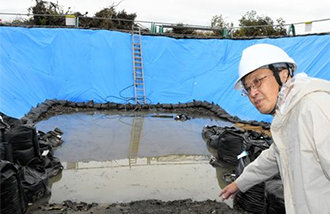Penang, Emerald of the Indian Ocean

An island located northwest of the Malay Peninsula. Penang is dubbed as the emerald of the Indian Ocean. Rundown buildings and allies that are the remnants of the colonial time is a must see tourist attraction. Resort towns with the view of the beach are also a major tourist attraction.
There are three ways to enter Penang. You could be there in 20 minutes, if you board a ferry, which operates around the clock. Another way is to ride a train to Butterworth and cross the Penang Bridge. The other is to use a domestic airline.
I would recommend using a ferry and enjoying the beautiful night scene of the island. But recently an airplane is the transportation of the choice to reach Penang. The 13.5km of Penang Bridge is constructed by Hyundai Construction.
Penang has been given beautiful names through its history. Malaysians called it Pulau Ka Satu or Single Island. Maps for navigations later marked the island as Pulau Pinang or Island of Betel Nut Tree. After being discovered by the Portuguese and known to the world, it was colonized by the British and called the Prince of the Wales` the island. After Malaysia`s independence, it was named Pulau Pinang.
The island still has remnants of the colonial era. Old fashioned European style buildings line in George Town, the center of the island. Fort Cornwallis, an old castle, is at northeast of the island. It is now a park, but was originally built to deter an invasion of pirates and other European powers.
● Georgetown, where you can still feel the influence of the colonization era
Finding Penang Street and Chulia Street is half way though enjoying the trip around Georgetown. Penang Street is lined with hotels, shopping malls, restaurants and bars while cheep accommodations and travel agencies are concentrated on Chulia Street. Chulia Street is like a Penang without makeup on it.
Temples of many religions, old building from the colonization era and modern buildings the new street are all mixed together in Penang, which gives the city its unique charm.
64-story building Komtar is seen from everywhere, serving as a landmark for tourists. Komtar itself is a tourist attraction. The first modern shopping mall Kompleks Tun Abdul Razak inside Komtar is always crowded with shoppers.
George town also has Eastern & Oriental Hotel, which was praised as the best hotel in the region by German writer Hermann Hesse. The hotel has been loved by many artists since it was established in 1885. The author William Somerset Maugham also often stayed in the hotel. 100 rooms in the hotel have their unique attractiveness with their antique atmosphere.
Batu Ferring is the most famous beach in Penang. Unlike downtown crowded with motorcycles, the beach is filled with resorts from many famous companies worldwide. Tourists can enjoy almost all marine sports. A more adventure-seeking tourist would ride a cable car to climb Penang hill that commands a fine view of the city or visit Penang culture center that provides a glimpse into the traditional culture of Malaysia and Penang. Snake temple is also recommended, which will give chill to tourists.
● Houses built on stilts over the water and modern building in good harmony
Sumatra Island has been heavily affected by the Indian culture since ancient times as the island of the thick forest sits facing the Malacca Strait, which is the key transportation spot between the East and the West. Major cities in the area include Medan, Palembang, the most popular among others, Padang, and Jambi.
Centered around the city of Palembang, a Buddhist kingdom, called Srivijaya, was established in 7th century and prospered since then. Hecho, high priest of Buddhism from Shilla Dynasty of Korea is recorded as having stayed a while in the region during his trip. The historic city has a folk tale that Singapore was named by a King of Palembang during his temporal stay in the nation.
Indonesia has carried out a national development plan, after independence, for attracting foreign immigration and developing Sumatra to become the second Java. But still, the majority of the nations land lies in the panorama of jungles.
Palembang, now, is a big city with the population of 1.4 million. It is also known as the second largest city on Sumatra as international ships of gigantic sizes frequent the island city, in which oil wells have been explored. Exotic scenery overwhelms the viewers in the city, where houses, built on stilts over the water, lie amid modern architecture.
Travelers may feel as if passage of time has eluded Penang and Sumatra Islands with few changes since 1911, when German writer Hermann Hesse visited the region.







